#prince william of württemberg
Text
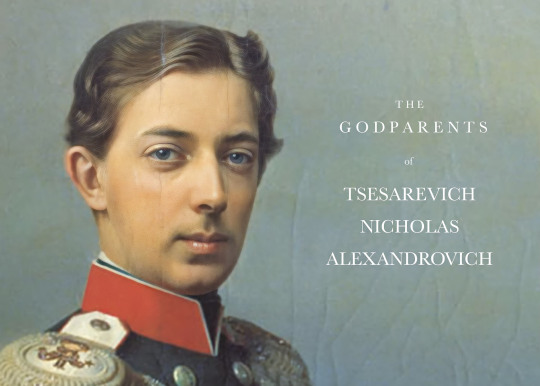
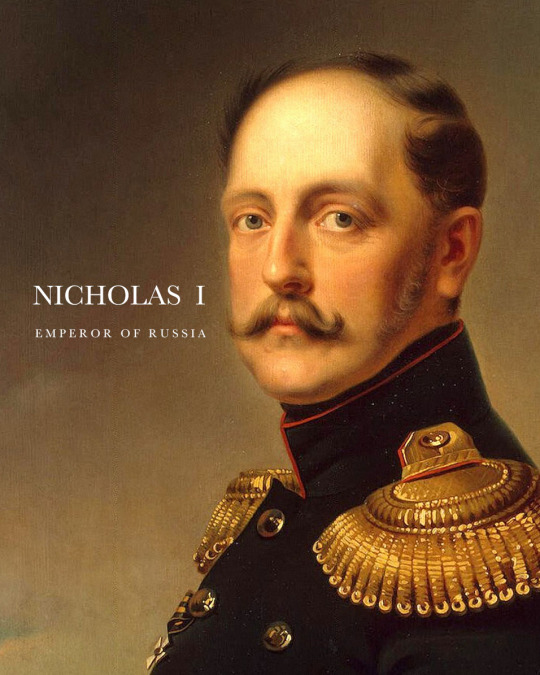
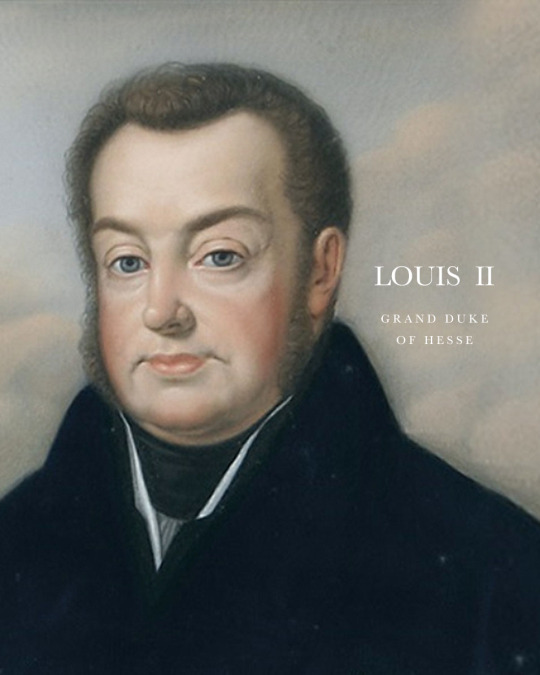


GODPARENTS OF TSESAREVICH NICHOLAS ALEXANDROVICH
Tsesarevich Nicholas Alexandrovich was born as Grand Duke of Russia during the reign of his formidable grandfather Emperor Nicholas I on 20th September 1843. He was the eldest son and second child born to Emperor Alexander II (then Tsesarevich) and his wife Empress Maria Alexandrovna. He was christened in the Grand Palace Church, Tsarskoe Selo, by the Confessor of His Imperial Majesty. He had four known godparents as listed:
NICHOLAS I, EMPEROR OF RUSSIA - his paternal grandfather and namesake was one of his godparents present at his christening. Mainly remembered in history as a reactionary whose controversial reign was marked by geographical expansion, centralisation of administrative policies and repression of dissent. He died in 1855, when the younger Nicholas was only 11 years-old, and thus making him the heir apparent (Tsesarevich).
LOUIS II, GRAND DUKE OF HESSE AND BY RHINE - his maternal grandfather was another of his godparents, but was absent at the christening. The hessian grand duke, like his paternal grandfather, was also considered a reactionary leader, he was in conflict with parliament almost his entire reign. The German revolution in 1848-49 proved his inability to govern. On March 5, 1848 he named his son Louis III as co-regent, and a year later he died.
GRAND DUCHESS ANNA PAVLOVNA OF RUSSIA, QUEEN CONSORT OF THE NETHERLANDS - his great-aunt was the third listed as godparent of the young grand duke, but was also absent at the christening. Queen Anna, the favourite sister of Emperor Nicholas I of Russia and the consort of King William II of the Netherlands, was a Russian patriot who upheld a strict royal etiquette in the Netherlands, where she never felt at home, and identified more as an Imperial Grand Duchess than a Dutch queen. She had no political influence, but was active within charity.
GRAND DUCHESS OLGA NIKOLAEVNA OF RUSSIA, QUEEN CONSORT OF WÜRTTEMBERG - his aunt was one of his godparents present at the christening. She was the younger sister of his father. Attractive, cultured and intelligent, she was considered to be one of the most eligible princesses in Europe. Just three years after her nephew was born, in 1846, she married Crown Prince Karl of Württemberg. Nicholas died just two months before seeing his aunt Queen consort of Württemberg.
Source
9 notes
·
View notes
Photo


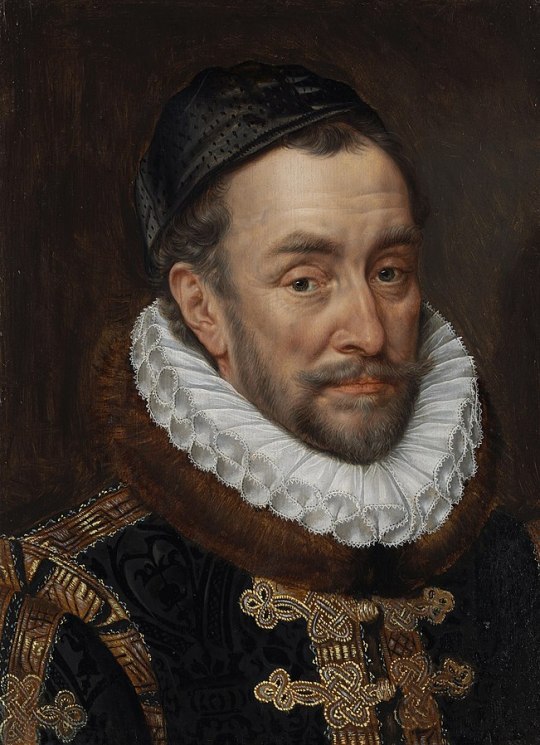



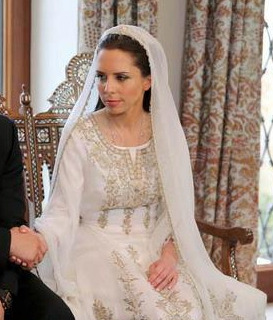
Royal Birthdays for today, April 24th:
Ramiro II, King of Aragon, 1086
Sabina of Bavaria, Duchess of Württemberg, 1492
William the Silent, Prince of Orange, 1533
Gaston, Duke of Orléans, 1608
Maria Clementina of Austria, Duchess of Calabria, 1777
Marau, Queen of Tahiti, 1860
Iman bint al-Hussein, Princess of Jordan, 1983
#ramiro ii#sabina of bavaria#maria clementina of austria#Queen Marau#Iman bint ِAl-Hussein#gaston of orleans#gaston of france#william the silent#long live the queue#royal birthdays
10 notes
·
View notes
Text
The University Roundup P1

Introducing the latest crop of young royals to attend Foxbury Institute:
(left to right)
Grand Prince William Württemberg (Deutschsim)
Prince Louis Philippe Bourbon-Orléans (La Simance)
Crown Prince Meiji Yamato (Simppon)
Hereditary Prince Agustin Grimaldi (Principaute de Simaco)
1 note
·
View note
Text

Prince William of Württemberg, future King William II, 1870s.
#prince william of württemberg#king william ii of württemberg#württemberg#german royalty#german royal#1870s
18 notes
·
View notes
Photo

George III and the Royal Family on the Terrace at Windsor, 1781
A procession walking in couples (right to left) across a quadrangle or court. They go in order of age: the two youngest infants, each in the arms of a lady, go first, the king and queen last. Prince Frederick and the Prince of Wales walk together; the next couple, the Princess Royal and Prince William Henry, turn round to look at their elder brothers. Princess Augusta Sophia has her arm round the shoulders of her brother Edward; next, Princess Elizabeth walks with an arm across the shoulders of Ernest; two little boys, Augustus and Adolphus, are next. In front of them are two little girls, Princess Mary and Princess Sophia. The two infants in arms are Octavius and Alfred (born in 1779 and 1780).
#George III#Queen Charlotte#George IV#Frederick Duke of York#William IV#Charlotte Queen Consort of Württemberg#Edward Duke of Kent#Princess Augusta Sophia#Elizabeth Landgravine of Hesse-Homburg#Ernest Augustus I of Hanover#Augustus Duke of Sussex#Adolphus Duke of Cambridge#Mary Duchess of Gloucester#Princess Sophia#Prince Octavius#Prince Alfred#Hanover Bros#The Dear Sisterhood#Art#Royalty#18th Century#Queue
55 notes
·
View notes
Photo
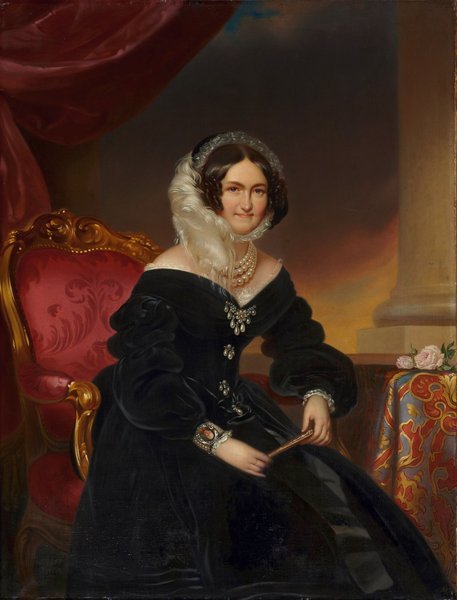
Caroline Augusta of Bavaria, Empress of Austria (8 February 1792 - 9 February 1873)
#caroline augusta of bavaria#empress of austria#daughter of maximilian i joseph of bavaria#married william crown prince of württemberg#then francis i of austria#history#women in history#18th century#19th century#art
45 notes
·
View notes
Photo

The Visit of the Grand Duchess Catherine As soon as they were rid of Napoleon, all the European sovereigns were planning to come to England to celebrate their victory, and as a vanguard, or perhaps a reconnaissance, the Tsar's favourite sister, the Grand Duchess Catherine, arrived while Napoleon was still at large.
#alexander tsar of russia#carlton house#charlotte&leopold#george IV (prince of wales and prince regent)#grand duchess catherine pavlovna duchess of oldenburg and queen of württemberg#james chambers#louisa theodosia hervey countess of liverpool#miss cornelia knight#napoleon bonaparte#prince george of oldenberg#princess charlotte of wales#princess dorothea von lieven née benckendorff#robert banks jenkinson 2nd earl of liverpool#sir henry halford#the napoleonic wars#the pulteney hotel#warwick house#william bathurst 5th earl bathurst#william IV king of the united kingdom (duke of clarence)
4 notes
·
View notes
Text
The Confederation of the Rhine
British victories at Trafalgar and Maida did not change the fact that by 1806 the Third Coalition lay in tatters and Napoleon dominated the European continent. When William Pitt received the news of Austerlitz, he pointed to a map of Europe hanging on a wall of his cabinet room and asked for it to be removed. "Roll up that map", he supposedly said. "It will not be wanted these ten years." Pitt was right. The triumphs at Ulm and Austerlitz made Napoleon supreme in Italy and southern Germany and gave him a free hand to redraw the political map of Europe. On December 26, 1805, Austria signed a new peace at Pressburg (present-day Bratislava). In addition to confirming French gains made in the previous Treaties of Campo Formio and Lunéville, the Habsburgs were required to surrender all remaining Austrian possessions in Italy, including Venice and its hinterlands, and pay a vast war indemnity. France's allies, Bavaria, Baden and Wurttemberg, were all rewarded for their loyalty and support with Austrian territories in the Tyrol and southern Germany. Thus the Treaty of Pressburg marked an end to the Habsburg influence in Germany and henceforth completely excluded them from Italy. The Holy Roman Empereur, Francis II, helplessly watched the demise of the political institution that his predecessors had toiled so hard to maintain.
The French emperor could have concentrated on consolidating his vast gains. Instead he pursued even more grandiose plans. The French army was kept intact in Germany at German expanse while Napoleon busied himself with extracting contributions from Austria, Spain, Switzerland, and German and Italian states, reorganizing the Batavian Republic into a monarchy, placing his brothers on royal thrones (Joseph in Naples, Louis in Holland), and rewarding his loyal officers with new titles and fiefs in Germany and Italy. Furthermore, even in peace, the emperor was keen on expanding his realm, redrawing borders in northeast Italy and directing French intrusions into Istria and Dalmatia.
As had been the case in 1800-1801, the most profound changes occured in Germany. In the aftermath of the Third Coalition's demise, the Imperial Reichstag was abolished (January 20, 1806), enabling Napoleon to launch a new wave of reorganization of German states. In March he established the first of a new set of minor German states, to be ruled by members of his family; the newly formed Grand Duchy of Berg was given to his brother-in-law, Marshal Murat. More important, the emperor made steps twoard a wholesale transformation of the Holy Roman Empire into a French-dominated German political entity that could serve as a buffer against Prussia and Austria, a market for French goods, and a source of military manpower for the empire. The Confederation of the Rhine (Rheinbund/ Confédération du Rhin) came into formal being in July 1806 when German princes (Fürsten) accepted the Treaty of Paris and recognized Karl Theodor von Dalberg as "prince-primate" (Fürstenprimas) and Napoleon as the "protector" (Protektor). Among the original sixteen German states of the confederation were Bavaria, Württemberg, Hesse-Darmstadt, Baden, and Berg, all of which withdrew from the Holy Roman Empire on August 1, marking the effective end of the empire; five days later, the Holy Roman Emperor, Francis II, had no choice but to surrender the Habsburgs' ancient imperial dignity and proclaimed himself Emperor Francis I of Austria in its place. Almost a thousand years after its inception, the German Reich, in the words of historian Sam Mustafa, "died with a whimper." Twenty-three additional German states would eventually join the Confederation of the Rhine, with only Prussia and Austria, alongside the much smalled Danish Holstein and Swedish Pomerani a, remaining outside it.
The establishment of the Confederation was not just a product of Napoleon's ambition. It also reflected the fact that the south German states were deeply apprehensive of Austrian and Prussian ambitions and willing to support France in exchange for lands and titles. As an inducement for their support (though, in practice, that support was often effectively coerced), Napoleon generously rewarded his Bavarian, Wurttembergian, Badenese, and other allies. Austria was forced to recognize the elevation ot the electors of Bavaria (Maximilian Joseph) and Württemberg (Frederick II) to the rank of kings, releasing them, as well as the newly-minted grand dukes of Baden (Charles Frederick), Hesse-Darmstadt (Louis I), and Würzburg (Ferdinand I) from all feudal ties. Furthermore, these states were made larger by incorporating Kleinstaaten, the smaller imperial member states that the Imperial Recess had swept aside.
Yet such aggrandizement did not come cheaply for the German states, which had exchanged benevolent Austrian leadership for the far more constricting and effective hegemony of France. The confederation was, at its heart, a political-military alliance, and France extracted vast contributions in men and matériel from individual members. And the Rheinbund had a deep, long-term impact on Germany. With its establishment, Napoleon had unwittingly placed the first brick in the foundation of the future united Germany. The French interventions in Germany in 1801 and 1806 profoundly changed the German political reality, reducing the approximately three hundred duchies, ecclesiastical cities, electorates, principalities, to just three dozen states that were ultimately united in 1871. The formation of the Confederation of the Rhine was a crucial moment in the development of modern Germany.
Alexander Mikaberidze- The Napoleonic Wars, A Global History
#napoleonic#alexander mikaberidze#the napoleonic wars: a global history#the confederation of the rhine
12 notes
·
View notes
Note
Were there any lgbtq+ kings/queens? I am a bit curious because I know people werent accepting back them, and was there any punishment for it?
Yes and there plenty of them. Most royals were not prescuted for being LGBTQ+ as they were above the standard of regular classes, however most were private and did not openly come out as LGBTQ+. Usually as long as they were discreet, people looked the other way.
Queen Anne (alleged had lesbian affairs, evidence is shaky)
Philippe d'Orleans (openly gay Prince living with his long-term lover, the Chevalier de Lorraine)
Edward II (had male lovers)
Richard I of England (allegedly slept with the French King)
Philip II of France (allegedly slept with Richard I of England)
Prince George, Duke of Kent (allegedly bisexual)
Marie Antoinette (allegedly had affairs with two ladies in waiting though evidence is shaky)
William II of England (had male lovers)
Richard II of England (may have been bisexual)
Emperor Hadrian
Emperor Nero
Emperor Tiberius
Henri III of France (allegedly gay)
James I & VI (had affairs with both men and women but kept it private)
Alexander the Great (was openly bisexual)
Princess Isabella of Parma (was allegedly in love with her sister in law)
Emperor Ai of Han (openly gay)
Christina, Queen of Sweden (had lesbian affairs)
Charles I of Württemberg (had an affair with an American gentleman)
Frederick the Great (allegedly had male lovers, one of which was executed)
103 notes
·
View notes
Photo

Princess Charlotte of Schaumburg-Lippe was the daughter of Prince Wilhelm Karl August of Schaumburg-Lippe, and his wife, Princess Bathildis of Anhalt-Dessau. As the second wife of King William II of Württemberg she became Queen consort of Württemberg. She was not only the last queen of Württemberg, but the last surviving queen of any German state.
11 notes
·
View notes
Text



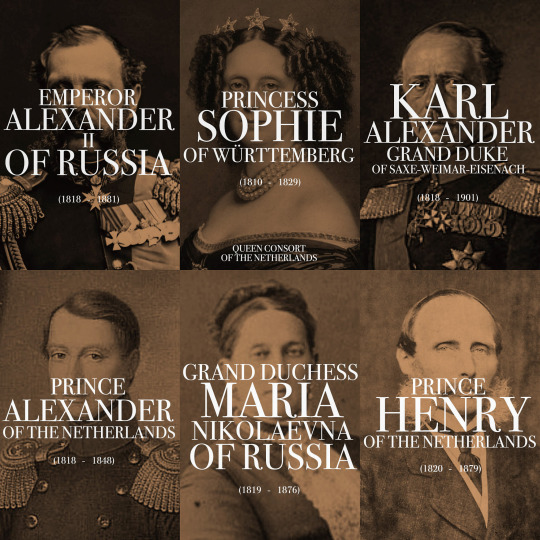


The Grandchildren of Emperor Paul I
Emperor Paul I of Russia had at least 30 legitimate grandchildren -23 survived to adulthood. Two of whom became reigning monarchs [Emperor Alexander II of Russia and King William III of the Netherlands]. Another two became Queen consorts of the Netherlands [Princess Sophie of Württemberg] and of Württemberg [Grand Duchess Olga Nikolaevna of Russia].
Among the 23 grandchildren that survived to adulthood, 16 of them have living descendants today. This includes King Willem-Alexander of the Netherlands, King Felipe VI of Spain, Queen Margrethe II of Denmark, King Carl XVI Gustaf of Sweden, and the Prince of Wales.
*Notes: Grand Duchess Maria Alexandrovna and Grand Duchess Elizabeth Alexandra were rumoured to have different fathers, but Tsar Alexander I recognised them. **Four of Emperor Paul’s grandchildren married each other: King William III of the Netherlands & Princess Sophie of Württemberg; and Karl Alexander, Grand Duke of Saxe-Weimar-Eisenach & Princess Sophie of the Netherlands.
#emperor paul#alexander ii#maria nikolaevna#olga nikolaevna#alexandra nikolaevna#konstantin nikolaevich#nicholas nikolaevich#michael nikolaevich#relatives#grandchildren#myedits#elizabeth mikhailovna#catherine mikhailovna#others
41 notes
·
View notes
Photo
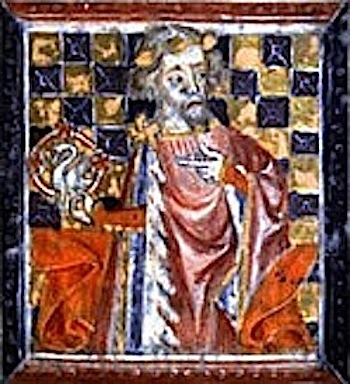

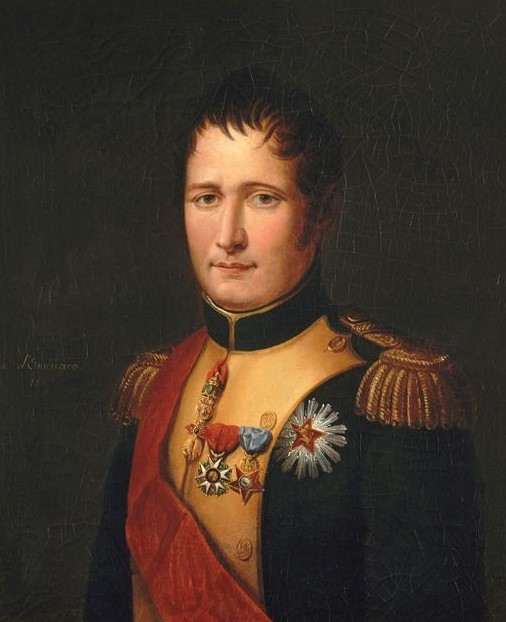
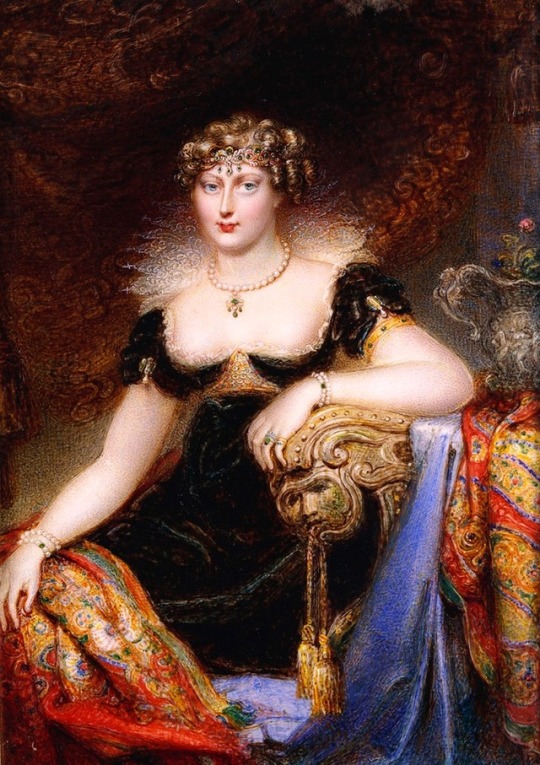


Royal Birthdays for today, January 7th:
Thomas of Woodstock, 1st Duke of Gloucester, 1355
William Louis, Duke of Württemberg, 1647
Joseph Bonaparte, King of Spain, 1768
Charlotte Augusta of Wales, British Royal, 1796
Ludwig III, King of Bavaria, 1845
Michael, Prince of Greece and Denmark, 1939
#joseph bonaparte#princess charlotte augusta#ludwig iii#prince michael#William Louis of Württemberg#thomas of woodstock#royal birthdays#long live the queue
12 notes
·
View notes
Text
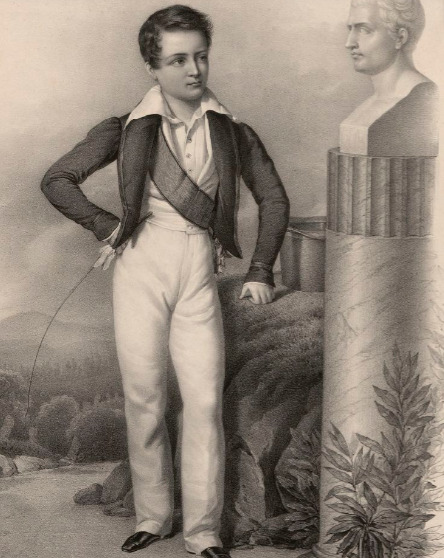

Jérôme Napoléon Charles Bonaparte, Prince of Montfort. (1814-1847) Eldest child of Jérôme Bonaparte and Catherine of Württemberg)
wikipedia:
“From 1832, Jérôme and his family lived at the court of his maternal uncle, King William I of Württemberg. He studied at the military academy of Ludwigsburg and served in the army, attaining the ranks of Hauptmann (captain) in 1834, major in 1840, and finally colonel.
“In the early 1840s he met and received the author Charles-Victor Prévot, vicomte d'Arlincourt in Stuttgart, who wrote of the young prince: "Prince Jérôme of Montfort, gifted with a handsome face and a graceful physiognomy, is French in spirit and in heart. He speaks and dreams of nothing but France. In speaking of the sons of that great nation he always says 'we'. His position at Stuttgart is brilliant; and yet it seems he would prefer the most modest home in France to the most beautiful foreign palace.”
#Prince of Montfort#Jerome's children#older brother of Plon-Plon#only lived to be 32#didn't have the robust constitution of the others#Napoleon's nephews#Napoleon's family#the writer Prevot was a character
9 notes
·
View notes
Photo

Queen Charlotte in Robes of State, by Joshua Reynolds, 1779
Charlotte of Mecklenburg-Strelitz (19 May 1744 – 17 November 1818) was Queen of Great Britain and Ireland from her marriage to King George III on 8 September 1761 until the union of the two kingdoms on 1 January 1801, after which she was Queen of the United Kingdom of Great Britain and Ireland until her death. As George's wife, she was also Electress and later Queen of Hanover.
Charlotte was a patron of the arts and an amateur botanist who helped expand Kew Gardens. She was distressed by her husband's bouts of physical and mental illness, which became permanent in later life and resulted in their eldest son George's appointment as Prince Regent in 1811. George III and Charlotte had 15 children in total, 13 of whom survived to adulthood. They included two future British monarchs, George IV and William IV; Charlotte, Queen of Württemberg; Prince Edward, Duke of Kent and Strathearn, the father of Queen Victoria; and Ernest Augustus, King of Hanover.
#Charlotte of Mecklenburg-Strelitz#House Mecklenburg-Strelitz#XVIII century#people#portrait#paintings#art#arte
13 notes
·
View notes
Text

Prince William of Württemberg, later King of Württemberg, mids 1860s.
#prince william of württemberg#king william ii of württemberg#württemberg#german royalty#german royal#1860s
28 notes
·
View notes
Photo

Detail from Benjamin West’s Queen Charlotte (1782) showing Charlotte’s fourteen children and the south front of Windsor Castle
#Benjamin West#Hanover Bros#The Dear Sisterhood#George IV#Frederick Duke of York#William IV#Charlotte Queen Consort of Württemberg#Edward Duke of Kent#Princess Augusta Sophia#Elizabeth Landgravine of Hesse-Homburg#Ernest Augustus I of Hanover#Augustus Duke of Sussex#Adolphus Duke of Cambridge#Mary Duchess of Gloucester#Princess Sophia#Prince Octavius#Prince Alfred#Royalty#Art#18th Century
14 notes
·
View notes